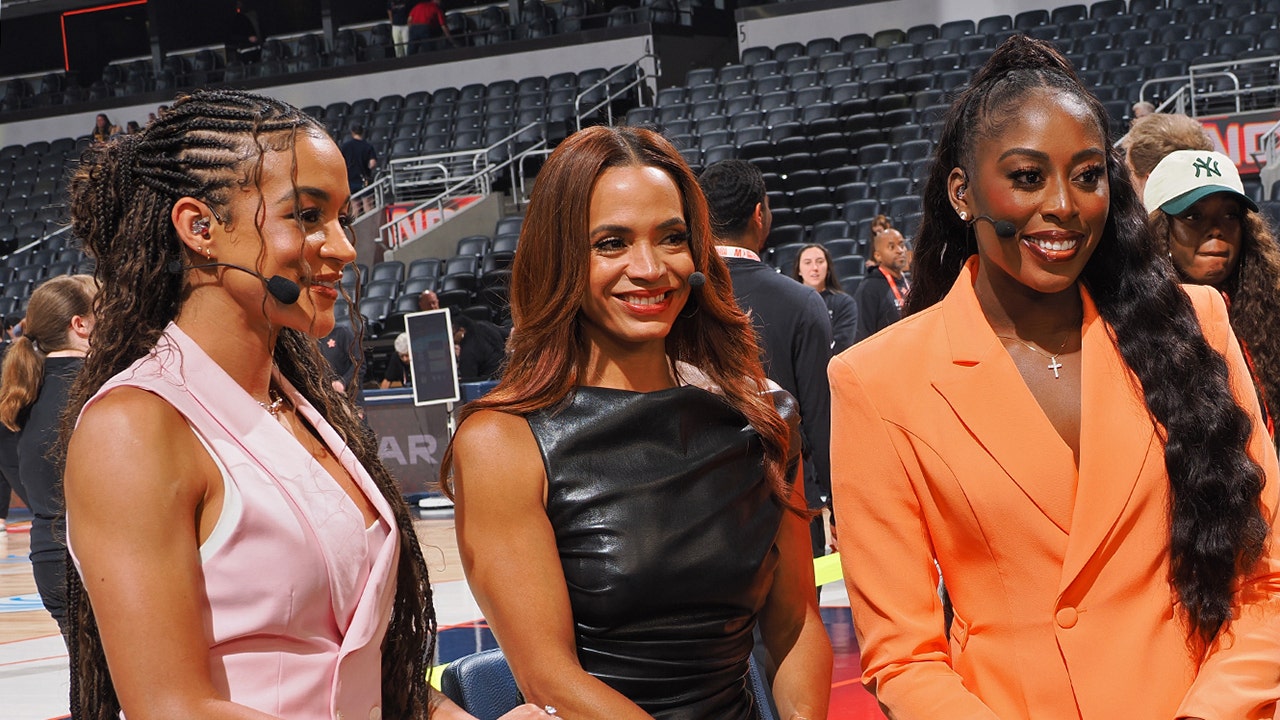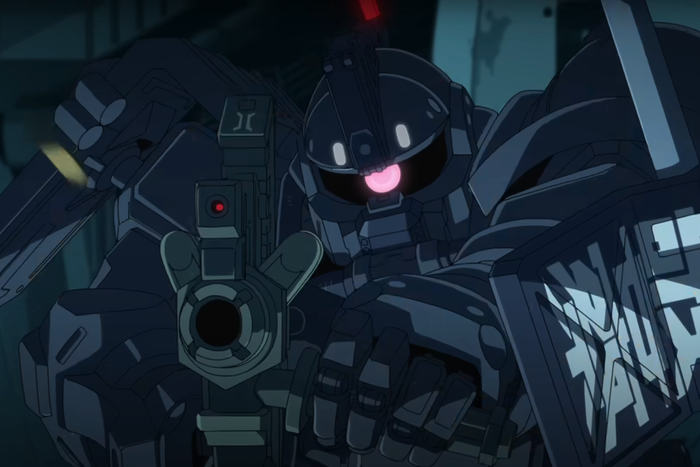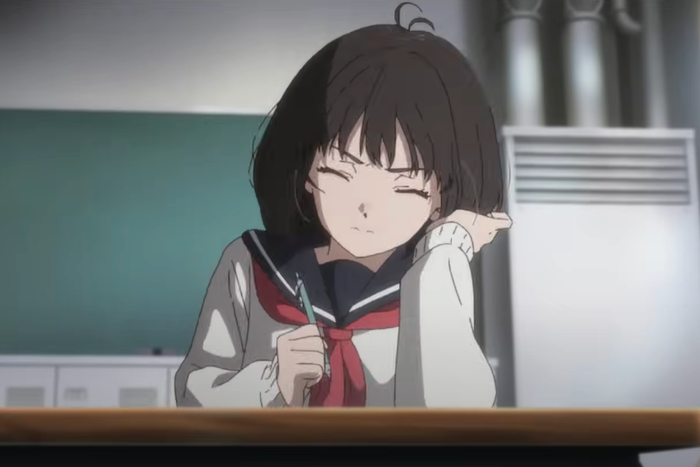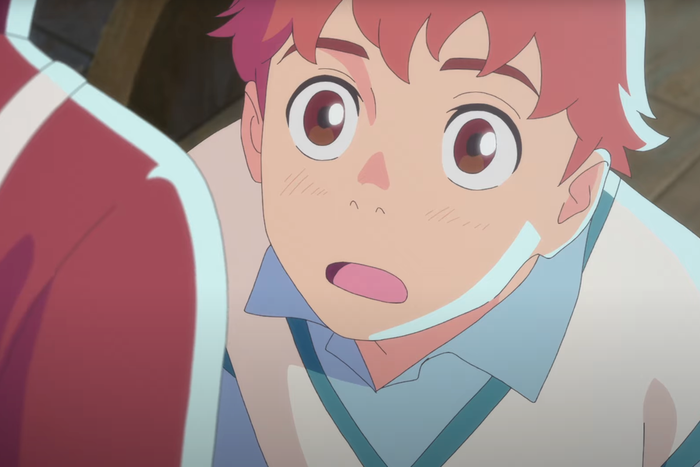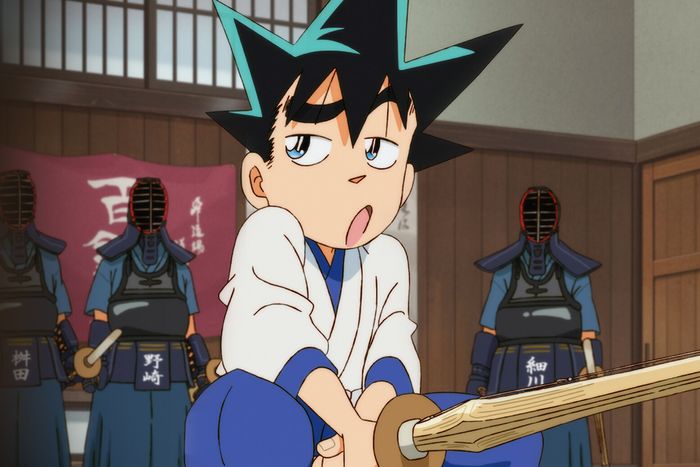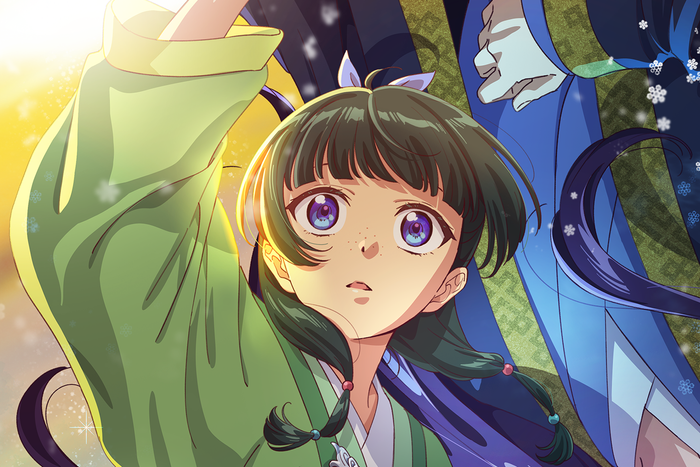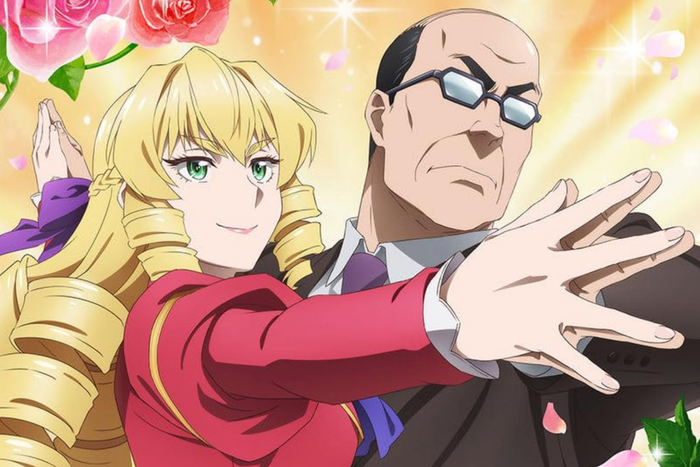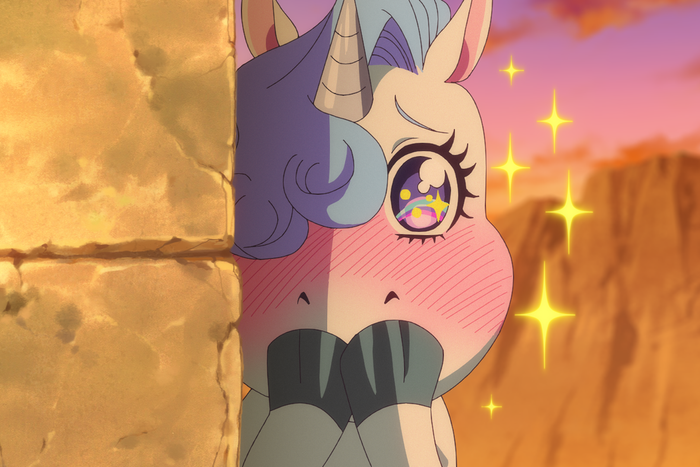Photo-Illustration: Vulture; Photos: GundamInfo via YouTube, Crunchyroll via YouTube, Hyuganatsu, Imagica Infos/“The Apothecary Diaries” Project, ©ZENSHU/MAPPA, Disney+
The anime release train stops for nobody — and even though the start of the year usually represents a quieter time in the cartoon calendar, there’s still a heap of anime to indulge in. It’s a good time for discovery too. Now that shonen heavy hitters like Dan Da Dan are in between seasons, it’s an opportunity to give some offbeat titles a chance. There are still fan favorites to enjoy, some which debuted late last year and are still airing new episodes, such as Dragon Ball Daima (featured as a highlight on our Best of 2024 list), which has come to feel like a fitting tribute to the late, great Akira Toriyama. Looking beyond those releases, we’ve sifted through some newcomers to find the best of the past few months.
Titles are listed by premiere date, with the most recent series up top.
Photo: GundamInfo via YouTube
The latest entry in the sprawling Mobile Suit Gundam franchise is less newcomer-friendly than its predecessor The Witch From Mercury, as well as its subtitle being harder to pronounce (“G-Kwuuks”, apparently). It essentially remixes the timeline from the original show, creating a divergence point by having the antagonist Char steal the Gundam before the protagonist Amuro can get to it.
But while the knowledge of Tomino’s classic series helps, GQuuuuuuX is enjoyable (and beautiful) enough without this context, especially with its delightful new cast of characters: the tiny, angry Machu is particularly easy to like. Directed by Kazuya Tsurumaki and written by Yōji Enokido — the artists behind FLCL — GQuuuuuuX is a pleasing fusion of his visual sensibilities with the politically charged mecha action of Gundam. The cartoonish character designs (courtesy of take, known for their work on Pokémon) pop with vivid color, as does its cylindrical space-colony setting.
The second episode may be pure fan service for longtime fans, full of Easter eggs and music stings from the original show, but there’s still more than enough for fresh eyes to enjoy — and no doubt, some exciting surprises in store for those in the know.
Photo: Crunchyroll via YouTube
Even with a wild twist in its final two episodes of the first season, Shoshimin has remained a show willing to take its time. The previous season’s revelation hangs over the new one: high-schooler Osanai isn’t just a dessert enthusiast but also a pint-size sociopath who orchestrated her own kidnapping to frame an enemy. She admits these things to protagonist Kobato with an eerie calm. It’s the closest the show floated to the same territory as Rian Johnson’s Brick, a detective-noir pastiche mapped onto an American high school.
But it also means two episodes dedicated to one long cat-and-mouse conversation as Kobato tries to get the truth, though one framed from many different visual angles. This decompression may be off-putting for some, but Shoshimin doesn’t fill this space with nothing, in part thanks to its beatific design, precise framing, and the satisfying rhythm of its editing. Not to mention, of course, the magnetic pull of its intrigue. The second season — which begins with some utterly gorgeous mixed-media opening credits, potentially the year’s best — keeps a tension simmering with the question of what stunt Osanai might pull next, as well as a new case that feels more high stakes than the openers of the previous season. Osanai’s new boyfriend, Urino, is investigating potential serial arson in the area. Crucially, this escalation doesn’t compromise the show’s interest in detailed deductions, meditative stillness, and the minute ways it studies the main characters’ compulsions — even as it ups the stakes, Shoshimin’s (relatively) ordinary pleasures remain.
Photo: Crunchyroll via YouTube
Decades after Studio Ghibli co-founder Isao Takahata helped to enshrine a plucky Nova Scotian orphan in the minds of Japanese audiences, a new adaptation of Anne of Green Gables recaptures that initial appeal. The background settings feel as though they leapt off the page of a storybook, appropriate for the whimsical fantasies of Anne Shirley’s overactive imagination. (Also look out for the opening and ending credits, both directed by the immensely talented Naoko Yamada.) This new version of Anne is a charismatic delight, and it’s easy to see why the siblings Matthew and Marilla Cuthbert take an almost instant shine to her, even though their adoption of Anne is due to an administrative mistake. In particular with Marilla, there’s a delightful tension between how the older woman speaks to Anne with surly authority while her actions betray an intense and immediate love for the precocious, red-haired 11-year-old.
Anne is drawn with a wide range of expressions and poses to go with her hyperverbosity as well as her tendency for intense dramatics, as every embarrassment or misstep becomes the worst thing that ever happened to her (“‘Good night’?! You must know it’s the worst night I’ve ever had!”). The show both recognizes the humor in acting like the width of the classroom between her and her friend is like an ocean and also understands the sincerity of such feelings. The show’s charm is bolstered by Anne’s winsome chatterbox personality as her outsize excitement over mundane things catches on. It’s easy to get invested in the drama of a decades-old story that is just as funny and moving today.
Photo: Crunchyroll via YouTube
The “generic” of its title is a misnomer, as this adaptation of the manga by Jun Mayuzuki gives a romance between two 30-something real-estate agents a significant dose of sci-fi spookiness. It’s set in a reproduction of Hong Kong’s Kowloon Walled City, albeit with a strange diamond-shaped device hovering over it. Reiko Kujirai has a budding romance with her co-worker Hajime Kudou, only to realize that she’s been in love with him before but doesn’t remember it.
The Eternal Sunshine–style twist is just the beginning of Kowloon Generic Romance’s mystifying plot, each episode adding new complications: like the simple fact that Kudo is reciting lines from their past relationship back at Kujirai, or the snake-tongued doctor who takes an interest in them both. It’s not the best-looking show of the season, but at the very least the characters feel unique, and Yoshiaki Iwasaki embodies their constant consideration of nostalgia’s allure through the hazy glow of its street scenery. The overall uncanny nature of a second Kowloon Walled City becomes an overbearing symbol of its characters desire to return to a past that’s been long since obliterated.
Photo: Netflix
It’s been a big 12 months for reboots of anime classics — Ranma ½ was a standout of last year while this season’s Anne Shirley is also featured on this list — but Yaiba: Samurai Legend refuses to fade into the crowded pack. As in the original, Yaiba is a little samurai boy who has mostly spent time training in the forest with his father. One day he moves to the city and makes an enemy of Takeshi Onimaru, going to extreme lengths to best him in a duel. Seeking revenge, Onimaru impulsively picks up a demonic sword in a shortcut to power, setting off a grand adventure. Directed by Takahiro Hasui at WIT Studio (Vinland Saga, Ranking of Kings), the show appropriately feels like a blast from the past, full of classical design touches, but is still fresh thanks to the high energy of its gorgeous, kinetic animation.
Photo: Hyuganatsu, Imagica Infos/“The Apothecary Diaries” Project
Scandal! Political intrigue! Forensics! Clandestine drag performances! All this and more in the second season of one of the best shows of the past few years, as The Apothecary Diaries brings more medical mysteries and sharply-written banter.
Chief writer and director Norihiro Naganuma comfortably settles back into the rhythm set by the first season, picking up on the fun bickering and (mostly one-sided) romantic tension between apothecary turned unofficial investigator Maomao and Jinshi (the emperor’s younger brother, masquerading as a simple administrator and court eunuch). It’s still a delight to see the granular process behind Maomao’s deductions, especially with her eclectic interests and relative lack of decorum compared to the delicate royals she cares for. It’s not just business as usual, though — using its early small-scale cases to build up a larger mystery that ties into Maomao’s family history as well as Jinshi’s.
Along with that bigger picture, The Apothecary Diaries still gets a lot of mileage out of highlighting the little things, like the more forward-thinking practices within an ancient court (for example, the first episode of season two begins with Maomao proposing proper sex education, the next considers the impact of drainage systems on palace health). It’s remarkable that an anime makes these considerations so fascinating to a viewer, and manages to maintain this intrigue even after upwards of 30 episodes, doing so by circling back to old mysteries and creating connections with the present while forging ahead.
Photo: HIDIVE
Isekai (“another world”) is a genre notorious for junk, simply because of the sheer influx of shows of the kind that overwhelm every anime season. But with a few small tweaks, From Bureaucrat to Villainess turns familiar cliche into winsome comedy.
The premise, as always with this genre, is in the title: A 52-year-old bureaucrat and father has been hit by a truck (classic) and reborn in another world as the teenage villainess of his daughter’s favorite otome game (typically, romance games aimed at women). To anyone familiar with the genre, which often goes to outrageous places, this is bog standard, but From Bureaucrat to Villainess puts a fun spin on it simply by having the main character be a very normal and respectful guy who, despite his vast reserves of otaku knowledge, only kind of knows how things work in this particular video-game world.
The show isn’t necessarily doing anything wildly off book — there are at least three other series about being reincarnated as the villainess in a fantasy story and failing at it. From Bureaucrat to Villainess is far from the first of this burgeoning subgenre (it even makes a joke about how expansive this heritage is), but it stands out for making its kindly characters both the draw and the joke, reinforced by solid animation performance and a great sense of timing as it goes for good-natured jokes rather than easy ones.
Photo: Disney+
A lot of sports anime are firmly on the side of the (usually preternaturally gifted) newbie to keep the audience on the journey with them as they learn the ropes. This isn’t to say that the formula is tired — a lot of great series have been made this way (go watch Haikyuu). But Medalist tweaks that equation a little, embedding itself from the perspective of the teacher as it begins. Tsukasa is 26 and feeling a little wayward, regretful about his late start in figure skating. Along comes 11-year-old Inori, who has a gift for it but is wary of starting at a more advanced age than her peers did. Thanks to the abrupt end of her older sister’s career, the young Inori admits defeat before the journey has even begun, even though she clearly wants to try.
From the jump, Medalist finds a strong emotional hook in Tsukusa’s drive to validate Inori’s feelings about skating, and comedy in his inability to be reserved about anything — he immediately screams “she’s a natural!” while he’s meant to be playing it cool to encourage Inori’s mother to let her join the club. From there, Medalist finds its journey both in Inori polishing her self-taught skills while Tsukusa settles into his new role as a coach — not just in terms of honing her skills, but also soothing the anxieties that come with a new competitive sport, especially one as expressive as figure skating: the nerves, the pervasive self-doubt of whether you’re good enough or as good as the others. The sweetness of Medalist comes from its assertion that as much as skill or hard practice, sometimes all you need is a little validation at the right time.
Photo: ©ZENSHU/MAPPA
The untimely death of the animation prodigy Natsuko, while on deadline for her first feature film, launches her into the world of an anime film she loved in her youth. (Yes, it’s another isekai.)
For a short time she revels in seeing her favorite characters brought to life in front of her, only to realize that the threats to them in the story are just as real. Though she’s far from suitable for combat, she’s able to use her drawings to summon anything from her imagination. This gives the show room to play with references to beloved works in some wacky and inspired ways, especially with the stipulation that she can never draw the same thing twice; one week it’s Nausicaa of the Valley of the Wind’s “God Warrior” sequence (famously animated in part by Hideaki Anno), the next it’s an Itano Circus of missiles as made famous by Macross, after that a feline fighter hitting an alien bug with a dragon suplex.
These instances aren’t just a fun way for Zenshu to break from the usual conduct of magic fights and throw other genres into the mix, but also the show’s most interesting visual touch. The summoned entities play with the form, emphasized as foreign objects by being presented as if they were raw drawings, without lighting and color. It’s a show of simple pleasures — like the comedy of a culture clash between a modern woman (who’s a bit of a gremlin, to put it gently) and the sword-and-sorcery fantasy world she crash-lands in, but it’s one bolstered by its display of affection for anime history and the act of drawing itself, despite its tribulations.
Photo: HIDIVE
Following an animated short released back in 2021, the colorful and gentle Sorairo Utility has graduated to a full TV series, the director Kengo Saito and his staff returning to expand on the high-schooler Minami’s exploration of the world of golf.
After trying out a deluge of school clubs — basketball, badminton, tennis, calligraphy — and failing at all of them, one day fate leads Minami to a driving range. It still goes clumsily, but there’s a beauty to it that captures her unlike the rest, not to mention Haruka, the girl who introduces her to the sport with her amusingly utopian viewpoint of golf (“it’s a sport that all kinds of people play, from the young to the elderly”). That sincere belief in the serenity of golfing is affirmed by the beatific animation.
Where some sports anime are about striving to be the very best in your field, Sorairo Utility is relatively laid-back in its attitude toward what makes a sport a worthwhile pursuit. But that doesn’t hold it back from occasionally landing within the boundaries of something like the silliness of Birdie Wing. The exaggerated animation of one episode pushes a cute competition between the girls and some golf store salesmen to absurd extremes, one man’s forearms growing to Herculean size as he attempts to big-league a 15-year-old in a challenge of who can hit the ball farthest. Beyond this moment of competitiveness, however, Sorairo Utility is mostly about relaxing and enjoying the journey, not just the result.
